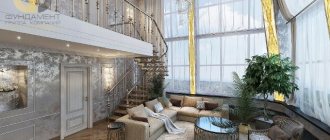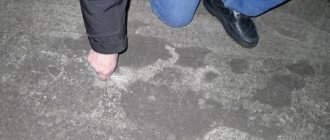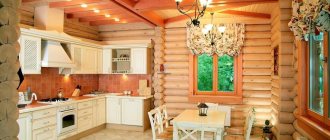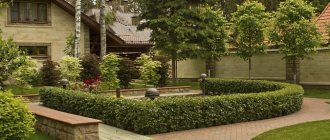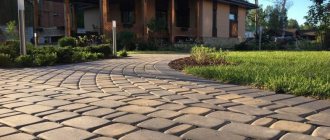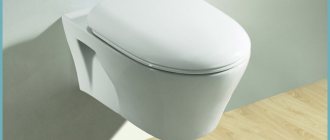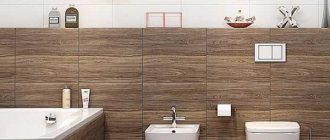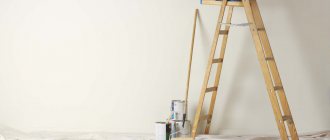Types of stylistic directions in which palace-style houses are built
Projects of elite estates and palaces are quite diverse. At the moment, the construction of houses in the palace style is becoming more and more popular. The buildings are not only distinguished by their scale, but also by their original design. There are some stylistic designs that are used to build such majestic buildings:
- classicism.
- baroque,
- Gothic,
- Renaissance.
House project in palace style
Sheremetev Castle in Yurino
Location: Yurino, Republic of Mari El
The beautiful castle in the village of Yurino belonged to the noble Sheremetev family. Photo: castlesheremeteva.rf
The elegant castle with crenellated towers, stained glass windows and mosaic floors belonged to the prominent boyar family of the Sheremetevs. It was built by lieutenant of the Cavalry Regiment Vasily Petrovich Sheremetev and his wife Olga Dmitrievna, maid of honor of the imperial court.
The requirements of the noble family were the highest: architects Alfred Parland (the “author” of the St. Petersburg Church of the Savior on Spilled Blood) and Pavel Petrovich Malinovsky worked on the future castle, and materials, furniture and interior items were brought from abroad. This is how a majestic eclectic building grew up on the banks of the Volga.
Once you've wandered the well-kept halls and absorbed the stories of the passionate tour guides, don't rush to leave. There are guest rooms right in the Sheremetev Castle: spend the night in one of them and find out if there are ghosts in the 19th century buildings.
By searching on Skyscanner, in addition to safe flights, you can choose hotels with a high rating for cleanliness and free cancellation
Classicism
Classicism is an architectural movement of the 17th-19th centuries. In most cases, in the construction of a house in this stylistic direction there is a peculiar appeal to the era of antiquity.
Projects of palaces in this style are very diverse. They have antique directions, which at that time were diluted with modern building materials.
Empire style house
The main characteristic of the direction is that the arch becomes flatter and lower; very often molding is used under it.
The postulate of classicism is the beauty of natural forms, which can be understood using fairly simple mathematical calculations and translated into reality thanks to the skill and skill of ancient master builders.
As for the shape in which the palaces were built, it was slightly elongated. All buildings were distinguished by their compactness and variety of shapes:
- U-shaped,
- W-shaped,
- U-shaped.
Such buildings with a courtyard, in which there was a very beautiful garden with numerous flower beds and tiled, were particularly attractive. Very rarely, palaces were found in a square shape, and if they were found, they did not have a courtyard.
The roofs of palaces in classicism were low and in most cases had flat shapes. They were decorated with a parapet, which most likely had the character of a decorative decoration. All forms of the building were proportional and had rectilinear shapes. To decorate the corners of such a building, stucco molding and majestic columns were used that supported the arch of the building. They could be found not only in the exterior, but also in the interior decoration in white.
Stone house in classicism style
Sometimes some changes were made in the design. In those centuries, everything depended on the capabilities of the owner of the palace. In expensive palaces one could see gilded or marble columns. But they were most often used to decorate the ballroom in the center of the palace.
The buildings are large buildings that have two to three floors with beautiful stained glass windows. At the moment, this stylistic direction is also very popular. Houses are also built on its basis, which do not have such significant volumes, but in appearance they still resemble a classic palace.
Project of a modern two-story private house in classicism style
A modern building is built using various materials:
- bricks,
- aerated concrete,
- foam concrete,
- shell rock.
All these materials are fire resistant and very durable.
Previously, all palaces were built in most cases using earth block or earthen block construction (earth blocks).
Projects of mansions in the castle style
| Fortress project No. 39-08 | Palace project No. 33-19 |
The photo from the catalog shows different solutions. Among the castle style projects there are buildings like a medieval fortress, and there are houses and cottages that are more reminiscent of a palace, for example, project No. 33–19. This is a large house with a light plastered facade, balconies and a terrace.
All our projects contain a full package of documentation necessary for construction: floor plans, masonry diagrams, sections of the roof and foundation. A specification of materials is attached to it, and using a special order form you can calculate an estimate.
Baroque
There is another stylistic direction that was used for the construction of palaces - the Baroque style. Translated, “baroque” means “bizarre.” Palaces that are decorated in this way have always been considered a sign of power and authority and are distinguished by luxury and massiveness.
English palace in baroque style
Distinctive features of the Baroque style:
- dynamism,
- pomp,
- pomp,
- solemnity.
This style of construction was intended for the organization of garden and park ensembles. All of them did not have clear forms.
In most cases, in this stylistic direction all kinds of building designs are merged. There is a very interesting play of color and quite bold contrasts in large-scale construction. Buildings that were built in this way could have several floors, but, unlike classicism, they could be unevenly distributed throughout the palace. It is for this reason that one could find a terrace on the second floor, which was comfortably located on the “ceiling” of the first (the first floor protruded and created a platform for organizing such a balcony for relaxation).
All Baroque buildings are picturesque and decorative. Their design combines not only the architecture of that time, but also certain sculptural trends.
Baroque house
This style appeared after the Renaissance, and it did not follow all the acceptable directions and clear lines of buildings, as in the Renaissance style. Curvilinear lines and directions were present not only during construction, but also during design. There was a very rich decoration of the buildings with sculpture and modeling.
The design of the Winter Palace was designed in the direction of classicism or baroque. These two stylistic trends became very popular in those centuries due to their power and luxury.
The famous Winter Palace in St. Petersburg
LiveInternetLiveInternet
Wednesday, November 17, 2010 19:49 + to quote book 1. Boris Iofan, Vladimir Shchuko, Vladimir Gelfreich. Project of the Palace of Soviets. Option 1937-1940
The proposal to build a stunning palace for meetings of the Supreme Council was made back in 1922 at the First Congress of Soviets, at which the creation of the USSR was announced. At this congress, S. M. Kirov made a lengthy speech that the USSR would expand and the Moscow halls would soon not be able to accommodate all the deputies. According to Kirov, the construction of the Palace of Soviets should prove that the Bolsheviks know how not only to destroy “the palaces of bankers, landowners and tsars,” but also to build. After listening to Comrade Kirov, the congress participants decided to build the House of Soviets, and not just anywhere, but “on the most beautiful and best square.” Architects began designing the Palace in 1931. A preliminary competition was held, in which the project prepared by the architect V. Balikhin and a team of students won. This team proposed placing a hundred-meter cube with Lenin on top in the middle of the capital. And on the surface of the cube the symbols of all the republics included in the USSR were supposed to be depicted. The architects assumed that the number of republics would constantly increase, and wisely provided space for the American, English, German and other republics of the future union. This huge cube was supposed to stand on the site of the Cathedral of Christ the Savior, which was proposed to be demolished. They quickly forgot about the cube with Ilyich on the roof, but everyone learned that the palace should stand on the site of the Cathedral of Christ the Savior. The temple was blown up in 1931, after which the design of the Palace of the Soviets turned into a national show. The architects were asked to design a “tribune of the stands”, an “all-Union tower”, from where, according to Demyan Bedny, “dynamite of our words will thunder out with a powerful cry more than once throughout the whole world.” If in old Moscow the Cathedral of Christ the Savior was visible from almost everywhere, then residents of Soviet Moscow should have seen the Palace of the Soviets from everywhere. The best architects on the planet were invited to take part in the design of the masterpiece. Surprisingly, foreign architects believed that the competition would be fair and that they had a chance to win it. 24 foreigners presented their projects, including even Le Corbusier. During the competitions, more than 160 projects were considered, and the projects of Soviet architects Zholtovsky and Iofan and the American Hamilton reached the finals. But in the end, the organizers of the competition settled on the project of Boris Iofan, who proposed building a three-tier tower topped with a statue of the “liberated proletarian.” Gradually the idea changed. First they abandoned the proletarian, replacing him again with Lenin. Then the building turned from a three-tier building into a five-tier building. As a result, the Palace turned into a pedestal for an 80-meter statue of Lenin, while its height was supposed to be about 415 meters (for comparison: the height of the Ostankino TV tower is 540 meters), and its volume was 7.5 million cubic meters. On paper it all looked very impressive, but no one was confident that the project was technically feasible. In addition, due to the climate of Moscow, approximately 200 days a year the figure of Lenin would be hidden by clouds. You can imagine what a tower would look like with a pair of shoes on the roof. However, the project was approved. I bring to your attention the projects that I managed to find on the Internet, as well as in the book by D. Khmelnitsky “Stalin’s Architecture: Psychology and Style”
2.Armando Brasini. Competition project for the Palace of Soviets in 1931
3.Armando Brasini. Competition project for the Palace of Soviets in 1931
4. G. Krasin, A. Kutsaev. Competition project for the Palace of Soviets in 1931
5.Boris Iofan. Competition project for the Palace of Soviets in 1931
6.Boris Iofan. Competition project for the Palace of Soviets in 1931
7. Heinrich Ludwig. Competition project for the Palace of Soviets in 1931
8. Alexey Shchusev. Competition project for the Palace of Soviets in 1931
9. Hector O. Hamilton. Competition project for the Palace of the Soviets, 1931.
10.Ivan Zholtovsky. Competition project for the Palace of Soviets in 1931
11.Karo Alabyan, Vladimir Simbirtsev. Competition project for the Palace of Soviets in 1931
12.Le Corbusier, Pierre Jeanneret. Competition project for the Palace of Soviets in 1931
13.Moses Ginzburg. Competition project for the Palace of Soviets in 1932
14. Nikolai Ladovsky. Competition project of the Palace of Soviets 1932
15.Leonid, Victor and Alexander Vesnin. Competition project for the Palace of Soviets in 1932
16.Ilya Golosov. Competition project for the Palace of Soviets in 1932
17.Ivan Zholtovsky, Georgy Golts. Competition project for the Palace of Soviets in 1932
18. Karo Alabyan, Georgy Kochar, Anatoly Mordvinov. Competition project for the Palace of Soviets in 1932
19. VASI brigade (leader Alexander Vlasov). Competition project for the Palace of Soviets in 1932
20.Vladimir Shchuko, Vladimir Gelfreich. Competition project for the Palace of Soviets in 1932
21. Anatoly Zhukov, Dmitry Chechulin. Competition project for the Palace of Soviets in 1932
22.Boris Iofan. Competition project for the Palace of Soviets in 1932
23.Boris Iofan. Competition project for the Palace of Soviets in 1933
24.Boris Iofan. Competition project of the Palace of Soviets 1933 /708/66708705_Karo_Alabyan_Anatoliy_Mordvinov_Vladimir_Simbircev_YAkov_Dodica_Aleksey_Dushkin.jpg" width="552″ height="246″ alt=" (552×246, 129Kb)"> 25.Kar o Alabyan, Anatoly Mordvinov, Vladimir Simbirtsev, Yakov Doditsa, Alexey Dushkin. Competition project for the Palace of Soviets in 1933
26.Ivan Zholtovsky, Alexey Shchusev. Competition project for the Palace of Soviets in 1933
27.Vladimir Shchuko, Vladimir Gelfreich. Competition project for the Palace of Soviets in 1933
28.Leonid, Victor and Alexander Vesnin. Competition project for the Palace of Soviets in 1933
29.Final project. At first, the war prevented the implementation of the plan. However, they did not give up on the idea of building a huge Palace. And in the 1950s, attempts were still made to somehow resume construction. But the tastes of the “customer” changed too quickly. And at the end of the 1950s, the construction of the Palace of Soviets was abandoned. The Moscow metro station "Palace of Soviets", opened in 1935, received its current name - "Kropotkinskaya" in 1957, and in 1959, construction of the Palace of Congresses began on the territory of the Kremlin (completed in 1961). An outdoor swimming pool “Moscow” was built in the pit. In the 1990s, the foundation of the Palace of Soviets was used to restore the Cathedral of Christ the Savior. Materials used: MUAR website (https://www.muar.ru) Supplement to the Komersant newspaper No. 31 dated 02/21/06 D. Khmelnitsky “Stalin’s Architecture: Psychology and Style”
A. Dushkin, J. Doditsa. 1st custom competition
Walter Gropius, German architect. All-Union open competition. The project under the motto “Polyus”.
Germanovich, Strzhalusvari, Simonenko. All-Union open competition.
D. Chechulin, A. Zhukov. All-Union open competition.
Palace of the Soviets scan from the magazine Soviet Architecture of the 1930s.
Zholtovsky with the participation of Golts. 3rd round 1st custom competition.
Ivan Zholtovsky, Alexey Shchusev. Competition project DvSov 1933 4th round, 2nd custom competition.
Iofan. First closed competition. Option Iofan. Preliminary competition
Iofan. Sketch-idea for completing the DS. Possibly 1933, the time of the 2nd closed competition.
Iofan's workshop. The period of the technical design of the Palace of Soviets was most likely 37-41, before they returned to three tiers (Sverdlovsk version).
| Categories: | Unincarnated in the USSR |
Cited 1 time Liked by 1 user
Like share
0
Like
- 1
I liked the post - Quoted
- 0
Saved
- Add to quote book
- 0
Save to links
Liked1
0
Gothic style
This stylistic direction was quite often used for the construction of palace houses of the 13th-15th centuries. The building designs were distinguished by their brightness and unusual design.
Various techniques and means were used for finishing:
- gilding,
- stained glass,
- a natural stone,
- glass and much more.
The Gothic style palace has expressiveness and spiers rising above the roof of the building.
Gothic palace
Due to the fact that the roofs of the palaces had semicircular shapes made of glass, this significantly loaded the walls of the building, and large windows were cut into them. Sometimes their size reached the height of the wall itself. Thus, this stylistic design allowed the art of stained glass to develop well, since all the windows were designed this way. Due to this, the entire palace became bright and large.
Palace of the Emir of Bukhara in Zheleznovodsk
Location: Zheleznovodsk, Stavropol Territory
The palace in the oriental style seems to have stepped out of the pages of One Thousand and One Nights. Photo: Department of Culture of the resort city of Zheleznovodsk
At the end of the 19th and beginning of the 20th century, the Bukhara Emirate was under the protectorate of the Russian Empire, and the ninth emir, Seyid Abdulahad Khan, traveled extensively throughout Russia. He visited St. Petersburg and loved to relax at his dacha in Crimea. He also liked the resorts of the Caucasian Mineral Waters: on his orders, a palace in an oriental style was erected in cozy Zheleznovodsk.
Neither Abdulahad himself nor his heir ever lived in the Caucasian residence, but this does not make the palace any less charming. Climb the stone staircase between the sculptures of lions, look at the intricately decorated portal, feel the beauty of oriental ornaments - and for a moment you will feel like you are in Samarkand or Bukhara.
Renaissance
This style in the construction of palaces was quite common. It can most likely be called decorative rather than constructive. All building lines were taken from the Greco-Romans.
The windows in castles were initially made semicircular, but over time they began to cut straight windows. All the palaces and castles simply amazed with their power and originality. As a rule, the decoration of buildings and inside and outside was done using marble.
In addition to this, they could use:
- wood (black or white);
- ivory;
- other natural stone;
- sandstone.
Renaissance-style palace in England
All the ornaments that were applied to the wall were taken from ancient culture. As for the color scheme, it was very diverse. They could use dark and gloomy shades, soft and light tones. There is even the use of saturated and quite bright colors. But, basically, the design was dominated by cool shades of white and other pastel colors.
Modern private house in Renaissance style
This stylistic direction is considered in demand today. Most new styles began to draw some of their directions from him. It can be used to build a palace-style house, which, of course, will be slightly smaller in scale than the palaces of that century, but will still amaze with its power. The building forms can be any, but, as a rule, palaces had similar forms in the classicist style.
Rococo palace in Prague
Palace style houses can be made in any style or direction. The main thing is that the landscape design around it should also correspond to the majestic structure.
Palace of Alexei Mikhailovich
Where is it located: Kolomenskoye Museum-Reserve, Moscow
Castles and palaces of Russia will tell many fascinating stories
A wooden tower from a fairy tale is about the palace of Tsar Alexei Mikhailovich in Kolomenskoye. The historical palace consisted of interconnected log cabins and was elegantly decorated with carvings and paintings. When the capital moved to St. Petersburg, the royal residence in Kolomenskoye was no longer needed and they decided to demolish it.
In the 2000s, the Kolomna Palace was painstakingly recreated according to the surviving plans, and the bright past seemed to return with it. In the Duma Chamber there are still benches for the boyars, in the throne room there is a throne with golden lions, and they are separated by a door with voluminous and magnificent Flemish carvings: everything looks as if the sovereign and the boyars will now enter and take their seats.
Castles and palaces of Russia in 2020-2021: visiting rules
Is it possible to visit castles and palaces during the coronavirus pandemic?
Each region of Russia now has its own rules for museums, and they change depending on the epidemic situation. Some museums are closed. To stay up to date with the latest changes, check the data on the pages of Rospotrebnadzor, the Russian Ministry of Health, as well as the official websites of local administrations and museums.
Have the rules for visiting museums in Russia changed? The rules differ from museum to museum, but the basic requirements are as follows: you must wear a mask and gloves in the premises, observe markings on the floor and social distance, and do not come with ARVI symptoms. In addition, many museums have reduced the number of visitors per day and are selling tickets for sessions, and excursion groups now include a maximum of 5-10 people.
Are there any palace museums in Moscow now? Federal museums (including castles and palaces of Russia) and the capital's museum-reserves are closed from November 15, 2021 to January 15, 2021 due to the worsening epidemiological situation.
How are the Hermitage and other palaces of St. Petersburg operating during the coronavirus? The State Hermitage Museum is temporarily selling tickets only online and only for certain sessions and routes in order to distribute the flow of visitors. As in other museums, masks and gloves are required. Entrance to Peterhof is by session and only as part of an excursion group (maximum 5 people), tickets must be booked online.
Oldenburg Palace
Location: Ramon, Voronezh region
In the vicinity of Voronezh, take a look at the Oldenburg Castle. Photo: Instagram of Alexander Lunev
A princess built a castle with lancet windows, snow-white battlements and a clock tower near Voronezh. Evgenia Maximilianovna was the granddaughter of the first wife of Napoleon Bonaparte, the daughter of the Duke of Leuchtenberg, the niece of Alexander II and the wife of a prince from the Oldenburg dynasty.
Her Imperial Highness had an active character: Princess of Oldenburg managed to head the Mineralogical Society, launch a “steam factory of sweets and chocolate,” open a stud farm and do much more. On her estate Ramon, she built a palace - elegant and technically advanced. The palace had a running water supply with cold and hot water, and the entire building was heated by a single stove, the warm air from which rose through cavities in the thick brick walls.
Now the Oldenburg Palace is being restored, and only the ground floor is open, but it won’t hurt to listen to an interesting excursion and take a walk in the beautiful park.
